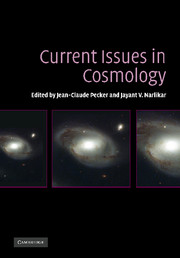Book contents
- Frontmatter
- Contents
- List of contributors
- Preface
- Part I Observational facts relating to discrete sources
- Part II Observational facts relating to background radiation
- Part III Standard cosmology
- Part IV Large-scale structure
- Part V Alternative cosmologies
- Part VI Evidence for anomalous redshifts
- Part VII Panel discussion
- 20 Panel discussion
- 21 General discussion
- 22 Concluding remarks
- Index
22 - Concluding remarks
Published online by Cambridge University Press: 15 December 2009
- Frontmatter
- Contents
- List of contributors
- Preface
- Part I Observational facts relating to discrete sources
- Part II Observational facts relating to background radiation
- Part III Standard cosmology
- Part IV Large-scale structure
- Part V Alternative cosmologies
- Part VI Evidence for anomalous redshifts
- Part VII Panel discussion
- 20 Panel discussion
- 21 General discussion
- 22 Concluding remarks
- Index
Summary
I have a dual role to play: As convener of this Panel Discussion and as a co-organizer of this meeting. So what I have to say is a mixture of the two.
First I wish to thank the panelists for expressing their points of view succinctly and also replying to the comments from the floor. Their differing points of view are what this meeting is about, namely a free and frank discussion of our current ideas about the origin of the Universe.
The majority view is expressed by Bertola and Blanchard, while the skeptical minority view is expressed by Disney and Burbidge. The majority view is simply that the standard model with specified parameters, having rather precisely determined values, explains all known facts of the Universe and that there is now a consensus amongst the community that this is so. Whatever remains to be understood can and should be explained only within this framework. This view is today called “precision cosmology” or “concordance cosmology.” Besides stating this premise, the view is that no other way of understanding the Universe has gone down to the same level of detail as the standard model and therefore all such alternatives cannot be compared to the standard model.
The minority view is that the successes claimed by the concordance model have been achieved at the expense of certain assumptions that have not been independently tested. These include inflation, non-baryonic dark matter, dark energy, etc. and the very high energy physics used as the basis of these ideas has not been tested in the laboratory. Further, there remain observed peculiarities, especially about redshifts, that cannot be understood by the standard model.
- Type
- Chapter
- Information
- Current Issues in Cosmology , pp. 261 - 263Publisher: Cambridge University PressPrint publication year: 2006



